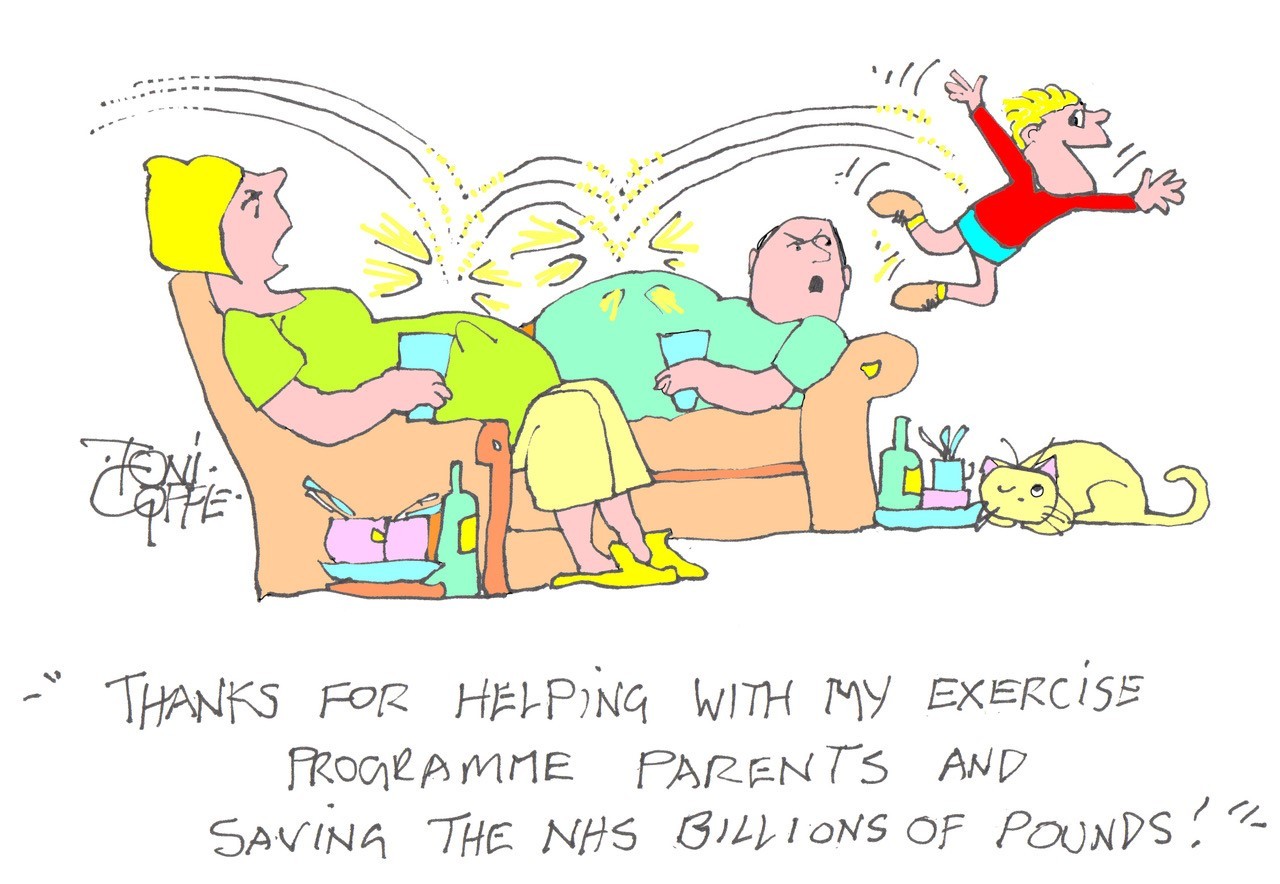THE SOCIAL & ECONOMIC COSTS OF INACTIVITY Part 2
The cost of an aging population
While the NHS provides some social care services to those with significant health-related care needs, most publicly funded care in England is organised and paid for by local councils. Adult social care spending accounts for more than one-third of councils’ overall spending on local services (excluding education). Last year’s social care budget was £22 billion.
The largest group of beneficiaries from this budget is the elderly. Currently, about 18% of the population is over 65 and this will have risen to 25% by 2046. Increasing age brings increasing debility and this is compounded by medical advances which, while helping with the treatment of individual diseases, also results in longer survival and ultimately more costly to the NHS and to the social care provision. See previous blogs about frailty in which I point out that as we age so does the period of dependency (and therefore cost) of our last years on earth.
Despite this, in the past five years, £900m (€1bn; $1.2bn) has been cut from the UK public health grants given to local councils
Old-age dependency
The greatest challenge lies in adult social care. Increasing numbers of people are unable to access social care, and care providers are at risk of collapse. Funding has not kept pace with demand, falling in real terms for most of this decade. Restoring access to 2010/11 levels of service, and investing to stabilise the social care workforce, would require an increase of £12.2bn compared to estimates of funding available in 2023/24 for councils to spend on social care.
Most of this expenditure is on the care of old people, either in their own homes or, more expensively, in care homes. It is my belief that the need for all this care is driven by poor health at the end of life and this results largely from long-standing unhealthy lifestyles
Some social and financial consequences
This again is all about frailty, the social and financial consequences of which are enormous and growing. When frail people become ill they have poorer outcomes for mortality, morbidity, or institutionalisation than the non-frail. If they need hospital treatment they have a high rate of readmission – as much as 40% over six months.
There are far too many people stuck in hospital beds, unable to go home because of lack of carers and lack of money to pay for them. The frail elderly occupy increasing numbers of beds in residential homes and nursing homes for dependent people. This has been amplified by the tragedy of the Coronavirus devastation in care homes.
If frail elderly people are able to stay at home they require regular visits from informal or formal carers to allow them to keep a semblance of normal life, though often without the comfort of being able to see their loved ones. They are also major users of emergency medical services presenting with such problems as immobility, incontinence, and confusion. The current estimate is that falls cost the NHS more than £2.3 billion per year.
The place of physical inactivity
Physical inactivity is the main cause of end-of-life frailty which is what leads to all these financial social costs. Frailty causes progressive loss of physical ability in later life – the difficulty in carrying out the activities of daily living, the loss of wellbeing, the loss of independence, and the consequent financial burden of needing care. The overall benefits of good health are incalculable but these benefits are there for the picking.
A new report from All-Party Commission on Physical Activity estimates that inactivity is costing the UK £20 billion per year and causing 37,000 premature deaths. This financial estimate includes the costs of treating all those conditions which are caused by a sedentary lifestyle – obesity, high blood pressure, diabetes, and all the others discussed previously. It also includes lost working days due to sickness and lack of productivity of unfit workers. It must be a vast underestimate since it does not take account of the huge costs of caring for elderly dependent people. A current estimate of the cost to the public purse for the care of the elderly is about £22 billion – and the notional care of informal care is an incredible £68 billion.
What’s to be done?
We need political action to prioritise the promotion and encouragement of physical activity. Prevention should be the name of the game.
And don’t forget COVID
The plight of old people herded together in care homes emphasises the awful social and financial consequences of premature dependence – and it is mostly premature and preventable. Add Covid to the equation and you have the modern tragedy of lockdowns and isolation of elderly relatives who can only see their much-loved relatives through a closed window. We all need to learn the lesson, keep physically fit and protect ourselves from such a future when the next deadly virus strikes.
PS
Our cardiorespiratory fitness peaks in our early twenties – after which we go to work and become increasingly sedentary. Being at work does not mean that you have to be inactive and there is an increasing movement to make the workplace a more active environment.
To find out more visit
Subscribe to the blog
Categories
- Accelerometer
- Alzheimer's disease
- Blood pressure
- BMI
- Cancer
- Complications
- Coronary disease
- Cycling
- Dementia
- Diabetes
- Events
- Evidence
- Exercise promotion
- Frailty
- Healthspan
- Hearty News
- Hypertension
- Ill effects
- Infections
- Lifespan
- Lipids
- Lung disease
- Mental health
- Mental health
- Muscles
- Obesity
- Osteoporosis
- Oxygen uptake
- Parkinson's Disease
- Physical activity
- Physical fitness
- Pregnancy
- Running
- Sedentary behaviour
- Strength training
- Stroke
- Uncategorized
- Walking


